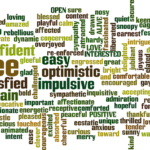We promised to put our MacArthur DML submission process and final submission up on the blog.
Then we got ridiculously busy with speaking.
Now we’re back, making good.
The Process
Our submission process was primarily driven by collaboration. Appropriately, we thought, considering the point of the competition.
We set up google docs for each one of the submission sections, had a draft up in two days and then passed the links around internally at Swift Kick.
Once everyone inside had a crack at clarity and grammar, we published the docs to our outside advisors. Greg Heiberger of SDSU knocked the stuffing out of it, in a really good way.
He actually ended up exporting into Word and tracking changes. The document, as it got back to me, was 90% red. There was very little untouched. His edited version was substantially better – it was tighter, clearer, and smarter in key ways.
A moment of clarity came with this process. We, Swift Kick, are very good at some things. People in our network are better at almost everything we do. We need to keep working to build, and work with, our network. Everything will be better if we can remember this lesson.
The other thing that was wonderful about google docs was how they enabled simultaneous editing. There were three or four people working on different aspects of the submission at any time, chatting via IM and phone. All of this was done while Tom and I were simultaneously participating in an APCA conference – marketing Red Rover to more Activities Advisors.
The tools enabled parallel processing and thus greatly enhanced our speed with the project.
Fred Stutzman had the last read through, and he had a couple of key emphasis changes. Fine tuning the piano if you will.
All in all, I think each section was combed through by four or five people all over the country at least two to three times.
Unfortunately, due to time, Tom and I were the last ones to touch the sections because we had to cut a few words out to get the sections within the word limits. This was the only real procedural regret I have, as I suspect this resulted in typos. Editing is neither of our strengths. Hopefully, the typos are minor.
All in all, the whole submission was done in approximately 7 days – on about 15% time focus for the first 5 days and 90% focus for the last two.
We had a couple of interesting discussions as to the appropriate time to dedicate to the submission. In the end, we saw the submission as a useful exercise to create focus and force us to think through some key aspects of the project.
As for winning, it seemed a long shot. Not because of flaws in the project, based on how much of our money and time are in this, we clearly believe in the project. We thought it was a long shot just because that is what all of our advisors said. “That’s the way grants work.”
So we spent the time we felt was appropriate for us to get value out of the exercise, while trying not to over invest in minutia. We tried not to overthink it.
The Submission
250 word introduction:
Red Rover is an online program that bridges the gap between the university and the student, beginning before the student arrives on campus and continuing throughout the collegiate experience. The program does so via a deep integration with social network sites, including Facebook.com, and self select interest tags.
The system automatically analyzes tags and matches results with programs, students, and student groups, providing opportunities for multifaceted engagement between the student and the university community.
Red Rover empowers student leaders, administrators, and new students with relevant data and connections to ease the college transition/orientation process. By making the transition/orientation process trackable in real-time, Red Rover allows college administrators to focus resources and lets student leaders focus on activities and connection opportunities rather than recruitment.
Issues facing Higher Education:
– Facebook has higher student engagement than institution portal solutions
– Excessive delay before assessment data becomes available
– Low involvement (NSSE data)
– High dropout rates
Goal:
Increase student connectedness with the institution (faculty, staff, and other students), which will consequently increase student satisfaction and retention (Tinto, 1993.)
Red Rover:
– Helps colleges engage students positively in a digital medium
– Dashboard benchmark metrics through real-time data
– Automatic and ongoing recruitment
– Facilitates connectedness by surfacing commonalities
After seven months of development, Red Rover currently operates in the pilot phase with five institutions and approximately 35 institutions registered for the second round pilot.
The proposed project will include feature additions, application optimization, marketing, and maintenance costs.
Main Narrative
The bulk of the submission is the narrative proposal, a full 1000 words. You can view it as a .pdf here.
Budget
It’s always fun to follow the money. The budget is a .pdf here.
Project Timeline
The timeline is probably what I’m most proud of because it is “live” – our project is moving right now. We are not waiting to find out the results of the competition. We have hard, measurable goals for Q4 2007 and Q1 2008.
You can see the timeline (as a google doc) here.
There were a few other sections of the submission, more peripheral aspects. If for any reason anyone wants to see them, just comment and I will post.




